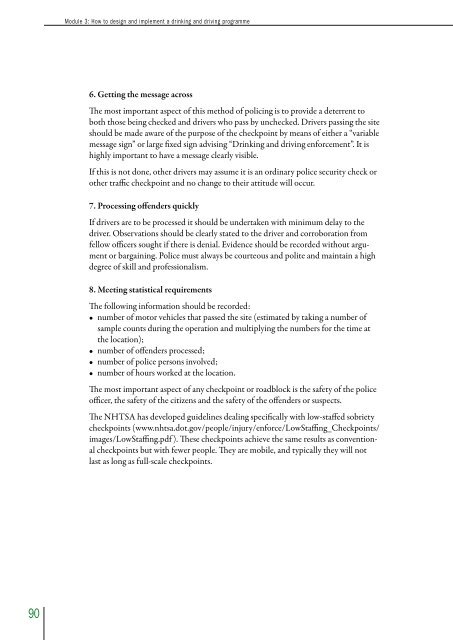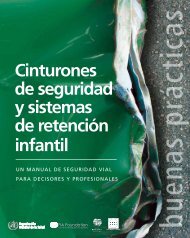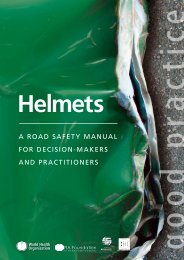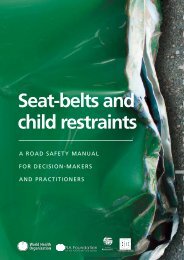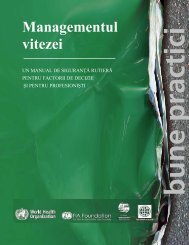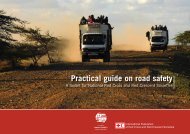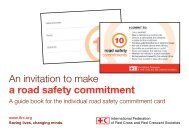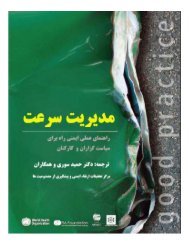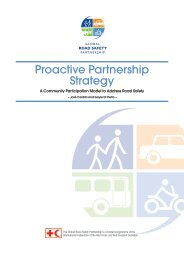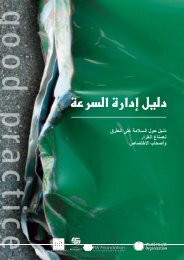How to design and implement a drinking and driving programme pdf ...
How to design and implement a drinking and driving programme pdf ...
How to design and implement a drinking and driving programme pdf ...
You also want an ePaper? Increase the reach of your titles
YUMPU automatically turns print PDFs into web optimized ePapers that Google loves.
Module 3: <strong>How</strong> <strong>to</strong> <strong>design</strong> <strong>and</strong> <strong>implement</strong> a <strong>drinking</strong> <strong>and</strong> <strong>driving</strong> <strong>programme</strong><br />
6. Getting the message across<br />
The most important aspect of this method of policing is <strong>to</strong> provide a deterrent <strong>to</strong><br />
both those being checked <strong>and</strong> drivers who pass by unchecked. Drivers passing the site<br />
should be made aware of the purpose of the checkpoint by means of either a “variable<br />
message sign” or large fixed sign advising “Drinking <strong>and</strong> <strong>driving</strong> enforcement”. It is<br />
highly important <strong>to</strong> have a message clearly visible.<br />
If this is not done, other drivers may assume it is an ordinary police security check or<br />
other traffic checkpoint <strong>and</strong> no change <strong>to</strong> their attitude will occur.<br />
7. Processing offenders quickly<br />
If drivers are <strong>to</strong> be processed it should be undertaken with minimum delay <strong>to</strong> the<br />
driver. Observations should be clearly stated <strong>to</strong> the driver <strong>and</strong> corroboration from<br />
fellow officers sought if there is denial. Evidence should be recorded without argument<br />
or bargaining. Police must always be courteous <strong>and</strong> polite <strong>and</strong> maintain a high<br />
degree of skill <strong>and</strong> professionalism.<br />
8. Meeting statistical requirements<br />
The following information should be recorded:<br />
• number of mo<strong>to</strong>r vehicles that passed the site (estimated by taking a number of<br />
sample counts during the operation <strong>and</strong> multiplying the numbers for the time at<br />
the location);<br />
• number of offenders processed;<br />
• number of police persons involved;<br />
• number of hours worked at the location.<br />
The most important aspect of any checkpoint or roadblock is the safety of the police<br />
officer, the safety of the citizens <strong>and</strong> the safety of the offenders or suspects.<br />
The NHTSA has developed guidelines dealing specifically with low-staffed sobriety<br />
checkpoints (www.nhtsa.dot.gov/people/injury/enforce/LowStaffing_Checkpoints/<br />
images/LowStaffing.<strong>pdf</strong> ). These checkpoints achieve the same results as conventional<br />
checkpoints but with fewer people. They are mobile, <strong>and</strong> typically they will not<br />
last as long as full-scale checkpoints.<br />
90


